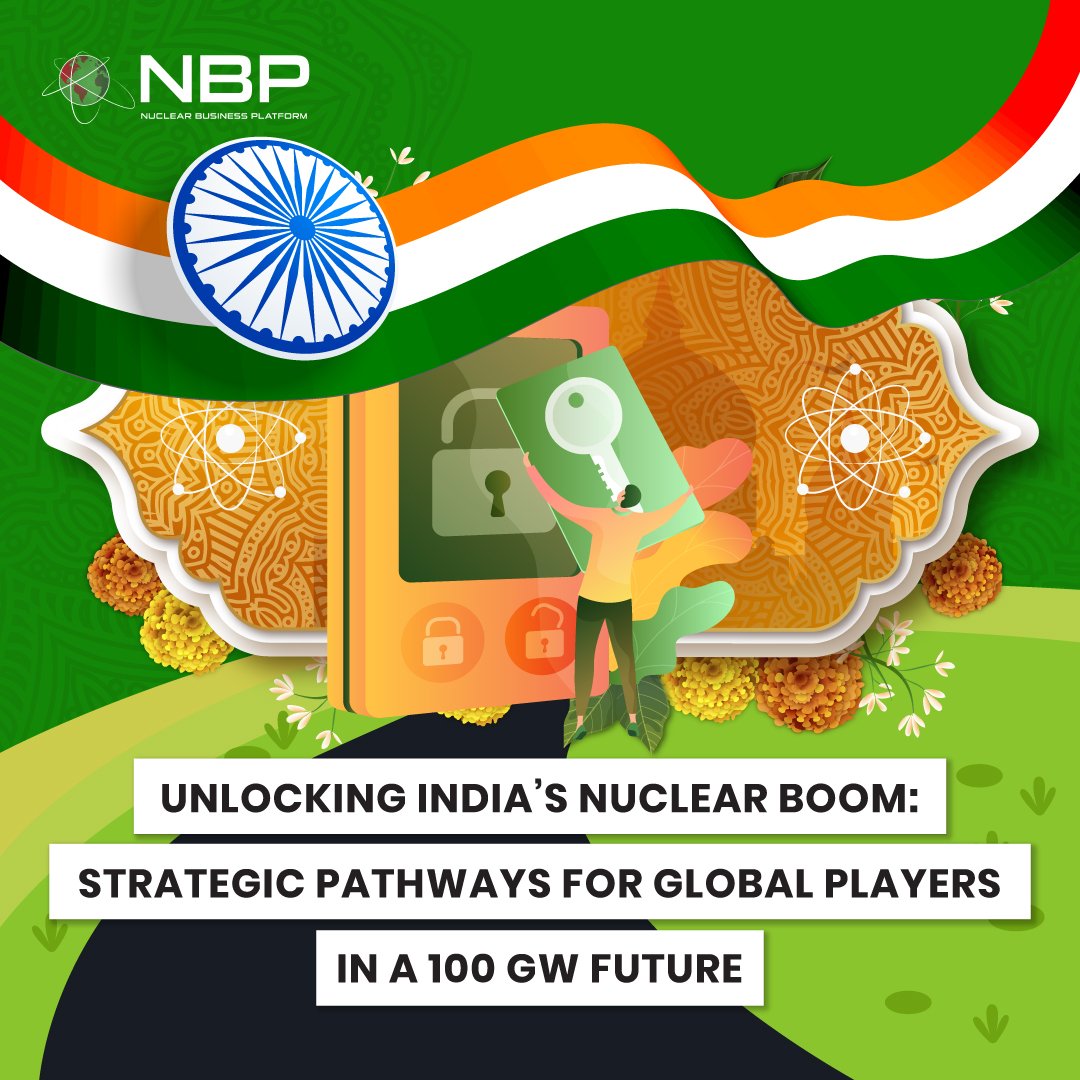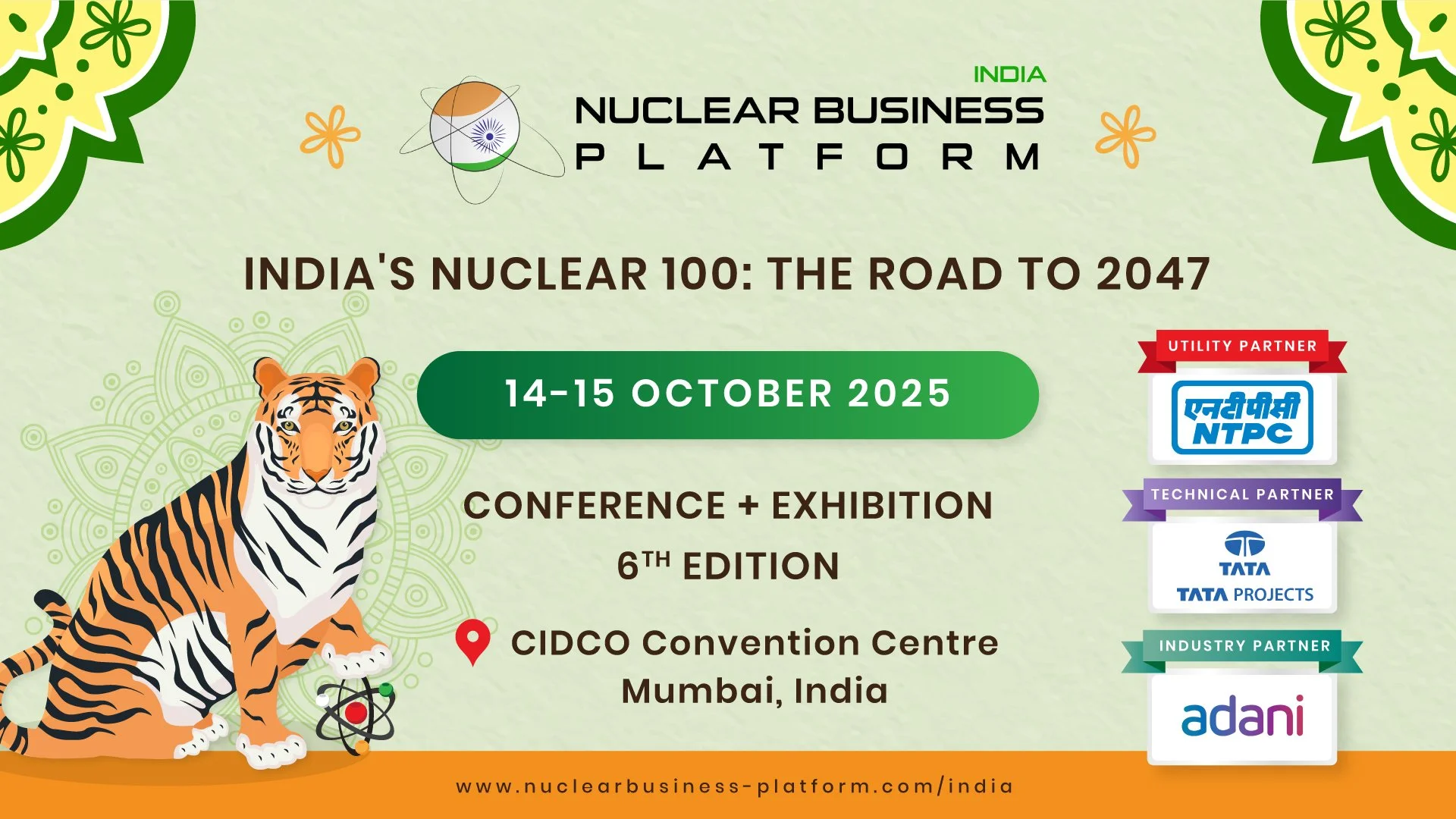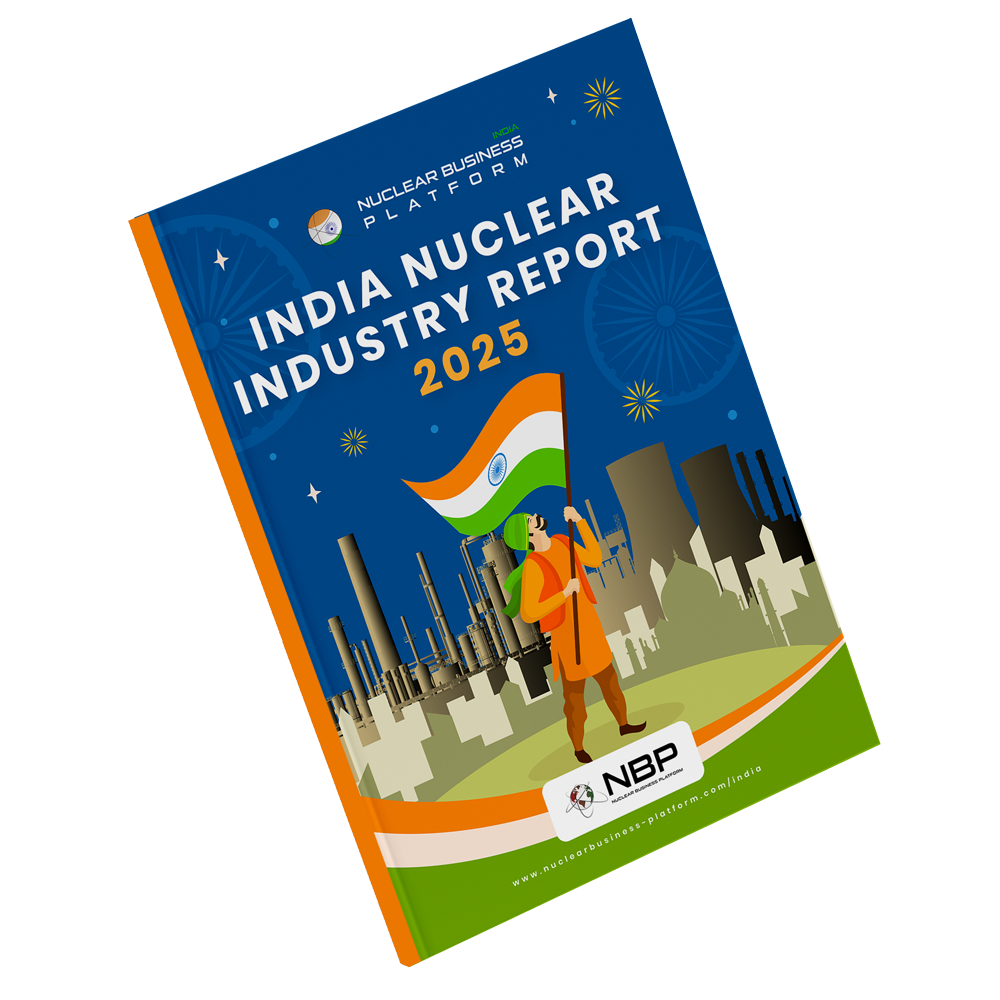Unlocking India’s Nuclear Boom: Strategic Pathways for Global Players in a 100 GW Future
India’s nuclear energy sector is opening its doors as never before, offering global companies a clear invitation to become part of its growing, future-focused energy landscape. But while the opportunity is undeniable, success depends entirely on choosing the right way in. India isn’t looking for casual vendors—it is seeking committed partners ready to navigate its evolving regulations, embrace local collaboration, and deliver lasting value. For international firms, this means carefully weighing a range of entry strategies, each with its own risks, requirements, and rewards. Should they partner directly with the government? Form local joint ventures? License technology? Build a supply-chain presence? The following analysis explains why India has become such an attractive market and, more importantly, sets out the concrete, proven pathways foreign companies can use to establish themselves as essential players in one of the world’s most important energy transformations.
Why Global Companies Are Attracted to India’s Nuclear Sector: The Market Imperative
India’s nuclear energy market is emerging as one of the world’s most compelling investment destinations, thanks to a confluence of ambitious targets, sustained policy reform, and intensifying energy demand. At the core of this appeal is India’s declared goal of achieving 100 GW of nuclear capacity by 2047—representing one of the largest planned civilian nuclear buildouts globally.
This commitment is underpinned by an urgent need to secure reliable, low-carbon baseload power for a growing economy with an increasingly urbanized, energy-hungry population. International companies see in India not merely a market but a decades-long pipeline of projects across reactor types and technologies, offering multiple, diverse entry points for collaboration.
Crucially, India is moving away from a rigid state-monopoly model toward a “sovereign-guided” framework that actively leverages private capital and operational expertise. Central to this transformation is the proposed overhaul of the Atomic Energy Act of 1962 and the Civil Liability for Nuclear Damage (CLND) Act of 2010. Amending the Atomic Energy Act would—for the first time—permit private companies to own and operate nuclear plants, while reforming the CLND Act aims to align India’s liability regime with international conventions by capping supplier liability. These legal reforms are widely viewed as essential to unlocking stalled megaprojects and boosting investor confidence.
In a further landmark shift, India is considering opening up to 49% foreign direct investment (FDI) in nuclear power projects, subject to government approval. This would overturn the longstanding ban on foreign equity participation in the sector, signaling a dramatic liberalization and welcoming international capital and technology partnerships.
To address investor concerns even before these legislative amendments are finalized, India established the Indian Nuclear Insurance Pool (INIP) in 2015. Managed by the General Insurance Corporation of India (GIC-Re) and a consortium of insurers, this ₹1,500 crore (approximately $180 million) fund serves as a critical risk-mitigation mechanism to cover liability exposures.
At the same time, India’s “Make in India” policy is being vigorously applied to nuclear construction, particularly through the “fleet mode” strategy for building ten 700 MWe pressurized heavy water reactors (PHWRs). The 2025–26 Union Budget formalized this shift through the new “Nuclear Energy Mission for Viksit Bharat,” which includes a dedicated push for Small Modular Reactors (SMRs). The plan envisions at least five domestically developed SMRs entering service by 2033, offering further opportunities for technology collaboration and supply-chain integration.
India is also steadfastly pursuing its unique three-stage nuclear program, which harnesses its vast thorium reserves. The operationalization of the Prototype Fast Breeder Reactor (PFBR) will make India only the second country, after Russia, with a commercial FBR capability—opening long-term prospects for advanced reactor R&D partnerships.
Finally, the U.S. Bureau of Industry and Security (BIS) has recently delisted key Indian institutions, including the Bhabha Atomic Research Centre (BARC), the Indira Gandhi Centre for Atomic Research (IGCAR), and Indian Rare Earths (IRE), from its Entity List. This removal of export restrictions—imposed since 1998—marks a major milestone in U.S.–India civil nuclear cooperation. It paves the way for advanced technology transfer, research collaboration, and more resilient bilateral nuclear supply chains.
In sum, the attraction for global companies lies in India’s bold policy vision, steadily improving investment climate, and clear commitment to expanding its nuclear fleet—making it one of the most dynamic markets for international nuclear firms seeking sustainable, long-term growth.
Best Paths for Entering the Indian Nuclear Energy Market
Global nuclear companies seeking to participate in India’s rapidly evolving energy landscape have several proven pathways to market entry. The choice of approach depends on a firm’s technological strengths, investment appetite, and long-term strategic vision. Crucially, these models are not merely theoretical: they are grounded in successful precedents that demonstrate India’s openness to varied forms of international collaboration.
1. Government-to-Government (G2G) Collaboration
This is the traditional and most secure pathway for large-scale, strategic nuclear projects. G2G agreements provide a comprehensive framework covering technology supply, construction, long-term fuel guarantees, and state-backed financing, offering maximum political and financial de-risking.
The Kudankulam Nuclear Power Plant (KKNPP) in Tamil Nadu is the flagship of Indo-Russian G2G cooperation. Based on a 1988 intergovernmental agreement and numerous subsequent protocols, this collaboration involves the construction of six VVER-1000 reactors. Rosatom serves as the technology provider and general contractor, with a commitment to supply fuel for the lifetime of the reactors, while the Russian government provides substantial credit lines to finance the project. This model has been extended with a strategic vision for at least 12 Russian-designed units to be built in India over the next two decades.
2. Technology Transfer and Licensing Agreements
This model allows a foreign technology holder to license its reactor designs and associated intellectual property to Indian entities for domestic manufacturing and deployment. It aligns strongly with the "Make in India" initiative and is becoming particularly relevant for the SMR market.
In a groundbreaking move in March 2024, the U.S. Department of Energy granted Holtec International specific authorization to transfer its SMR technology to leading Indian engineering firms Larsen & Toubro (L&T) and Tata Consulting Engineers. This approval enables a foreign-designed SMR to be manufactured and built in India by Indian companies, creating a powerful template for other advanced reactor developers seeking to enter the market.
3. Joint Ventures with Indian PSUs or Private Firms
Forming a joint venture with an Indian partner is a powerful strategy to combine foreign technology and capital with local market expertise, manufacturing capabilities, and project execution experience. This model allows for shared risks and rewards.
While a domestic partnership, the formation of Anushakti Vidhyut Nigam Ltd (ASHVINI) sets a critical precedent. The government approved this JV, with NPCIL holding 51% and power utility NTPC holding 49%, to build, own, and operate nuclear plants. The JV is taking over the development of the 4x700 MWe Mahi Banswara project, demonstrating a new ownership model that moves beyond the NPCIL monopoly. This structure serves as the blueprint for future JVs that could include private Indian firms and foreign partners.
4. Supplying Components and Fuel Cycle Services
This is the most accessible entry point for a broad spectrum of companies. It involves participating in the extensive supply chain for both the nuclear island (reactors, steam generators, forgings) and the conventional island (turbines, generators), as well as providing front-end fuel cycle services like uranium supply and enrichment.
A prominent success story is GE Steam Power, which secured a $165 million contract to supply three nuclear steam turbines for India’s indigenous 700 MWe PHWR program. In partnership with Bharat Heavy Electricals Limited (BHEL), these turbines are being manufactured at GE’s facility in Sanand, Gujarat, demonstrating effective integration into India’s domestic supply chain.
Similarly, Canadian uranium giant Cameco signed a landmark long-term contract in 2015 to supply 7.1 million pounds of uranium concentrate to India’s Department of Atomic Energy, marking a revival of nuclear trade between the two countries after decades of restrictions.
5. Establishing a Local Presence
For companies with long-term ambitions in India, establishing a formal local presence is critical. Setting up a subsidiary or representative office enables direct engagement with regulators, utility partners, and government agencies while supporting local hiring, procurement, and business development.
For instance, U.S.-based Holtec International operates in India through its subsidiary Holtec Asia, which provides direct access to engineering contracts, turnkey solutions, and local partnership opportunities.
6. Participation in R&D and Human Resource Development
Beyond commercial deals, building strategic influence through research collaboration and human capital development is an increasingly valued entry route. Participation in joint R&D, training, and capacity-building initiatives helps international companies establish credibility and long-term relationships within India’s nuclear ecosystem.
India's Global Centre for Nuclear Energy Partnership (GCNEP) is a hub for international collaboration. It actively partners with the IAEA and countries like the United States and the United Kingdom to conduct training programs, workshops, and joint R&D. GCNEP hosts events like the Indo-US Workshop on SMRs and Indo-UK technical exchange meetings on nuclear security, providing a formal platform for foreign experts and companies to engage with India's nuclear ecosystem at a foundational level and build crucial relationships.
Which is the Most Strategic Entry Modes and Why?
While India offers multiple well-established pathways for foreign companies to participate in its nuclear sector, their strategic relevance varies widely depending on the company’s profile, capabilities, and appetite for risk. A careful assessment suggests distinct priorities for different classes of players aiming to secure a sustainable presence in this dynamic market.
For large reactor vendors, the most viable path is a combined approach that pairs government-to-government engagement with meaningful technology transfer and localization commitments. These companies face multi-decade project horizons and significant capital outlays that require robust risk-sharing frameworks backed by state guarantees. Engagement in India’s ongoing legislative reforms, especially around civil liability, is essential to address supplier risk concerns. Equally important is a clear strategy for partnering with leading Indian EPC firms such as L&T to deliver cost-competitive, localized solutions that will gain both regulatory and political acceptance.
For component manufacturers and EPC firms, India’s focus on standardized fleet-mode deployment of its indigenous 700 MWe PHWRs presents a large, predictable opportunity for direct supply contracts and local joint ventures. Partnering with established Indian majors (JVs) like L&T, BHEL, or Godrej & Boyce helps reduce execution risks, streamlines the regulatory process, and builds on existing relationships with NPCIL. This approach offers an immediately accessible entry point with high-volume potential in the domestic supply chain.
For SMR and advanced reactor technology providers, India’s deliberate push to develop a privately funded market represents a highly strategic long-term opportunity. Major Indian conglomerates—such as Tata Power, Reliance Industries, Vedanta, and Jindal Nuclear—are actively seeking proven, licensable technologies to anchor their planned investments. Foreign technology holders who can forge early, durable partnerships stand to become preferred suppliers as India scales up its SMR and advanced reactor deployments over the next decade.
For fuel suppliers, long-term contracts with the Department of Atomic Energy (DAE) and NPCIL remain the most stable and predictable route. As India’s fleet of imported Light Water Reactors expands and new SMRs come online, demand for uranium, conversion, enrichment, and fabrication services will grow in tandem. Suppliers that secure reliable agreements will benefit from steady, volume-driven business tied directly to the country’s capacity expansion targets.
A final, cross-cutting imperative for all serious entrants—regardless of their primary strategy—is the need to establish a local corporate presence. Navigating India’s complex regulatory environment, managing partnerships, and integrating into local supply chains cannot be accomplished from afar. A permanent on-the-ground operation is essential to building credibility, ensuring responsiveness, and sustaining long-term success in a market of this scale and complexity.
Moving Ahead
Entering India’s nuclear energy sector is no longer a speculative ambition—it is a strategic necessity for global companies aiming to align with one of the world’s fastest-growing clean energy markets. However, success demands more than intent; it requires a nuanced understanding of India’s regulatory reforms, industrial landscape, and evolving partnership models. In this context, the 6th India Nuclear Business Platform (INBP) 2025, scheduled for 14–15 October in Mumbai, emerges as the most effective gateway. By convening senior government officials, policymakers, NPCIL leaders, and private sector stakeholders under one roof, INBP 2025 offers unmatched access to insights, networks, and actionable opportunities. For international firms seeking to identify the right entry mode—be it joint ventures, technology licensing, localization, or strategic partnerships—this event presents a direct, on-the-ground solution to engage with India’s nuclear decision-makers and position themselves at the forefront of its next growth phase.



